Customer experience is a growing area for many companies as they seek to differentiate their offer from competitors.
The tools of customer experience have grown from technology user interaction, web design and marketing to form a rapidly evolving discipline. The pace of change in customer experience thinking is rapid, but for a good summary of the basics check out Beyond Philosophy or my background article on this site or the Tinderhouse website.
Last week I returned from a holiday in the New Forest, in South East England. We rented a holiday property – and it was this experience that I thought was a good example of how a great customer experience can differentiate one holiday property from its competitors.
We tend to rent holiday properties rather than stay in hotels, so have stayed in quite a few. And when researching somewhere to stay in the New Forest we found there were hundreds, if not thousands of places we could have rented – so holiday property owners need to differentiate their offer to attract customers.
The property we eventually went for was The Captain’s House in Hythe. In this article I’ve looked at some of the things that made our experience renting this property great.
Pre-purchase
We tend to look on the web for information about places to stay on holiday, so the first time we came across the Captain’s House was as a result from a Google search.
Clicking through to the site at www.captains-house.info the first thing we saw was some attractive pictures of the property and the view from the front window – a real selling point.
Exploring the site further it appeared comprehensive, and provided plenty of information to help us make the decision to rent or not.
The site was a pleasant change to many of the holiday property websites we found – many of which didn’t provide enough information for us to decide whether to even consider renting them. Most people wouldn’t consider renting a property on the basis of a picture and three bullet points of information (the worst site I found had just this).
The website was also fully accessible and advertised that fact using the common W3C HMTL 4.01 and CSS logos, along with a strapline for the less techno-friendly visitor (“_The above logos show that we have taken the care to create an interoperable Web Site for people with disabilities._”). While this wasn’t relevant to our web browsing, it showed an attention to detail that hinted at some of the values held by the owners.
The website sold it to us, so we thought we’d request a brochure and email with some further questions we had. Even though it was the Christmas period the brochure arrived promptly with a personal letter from the owners.
My email was answered more than comprehensively a few days later, accompanied with profuse apologies for the delay (over Christmas Day!).
Having decided to rent the Captain’s House we booked over the phone with the owner, and the paperwork was completely promptly and accurately within just a few days.
Before our holiday we received a helpful information sheet showing us how to get to the property and how to get access. A range of further contact details were also included should we need them.
The product itself
When we walked into the property, the first thing that struck us was how clean and tidy it was. Everything was in good condition and a lot of care and attention has obviously been lavished on it.
This shows a key point about customer experience – the core product must be sound for the special aspects of customer experience to be valid. If the property had been a mess and badly looked after, the little touches below wouldn’t have made any difference to our overall experience.
So what made a good experience great? Well it’s the little touches – things that individually might seem trivial, but when combined with a good product make a real difference – at the Captain’s House these included:
- all the property keys were colour coded, so we immediately knew which key opened which door
- the property had been left with the heating on, so when we arrived it was warm and welcoming, rather than cold and damp as many properties are when you rent them out of season
- a card with a personal message from the owners welcoming us was left in the kitchen, with a bottle of wine chilled in the fridge
- the instruction manuals for the domestic applicances were all filed, so if we needed them we could easily find what we needed to know
- an information folder was provided about the area – this is quite common in rented holiday properties, but this one had several pages of information written by the owners, and was arranged in order with an index. It also included local takeaway menus which was much appreciated.
- one of the marketed benefits of the property was its waterfront view, and being able to see all sorts of shipping coming and going on Southampton Water. The owners had provided a schedule of expected shipping movements.
Post-purchase
Having had a great holiday we received a personal letter from the owners within four days thanking us for leaving the property tidy and returning our security deposit.
This element closed the whole customer experience of renting the property in a consistent way to the overall experience, and helped make a good customer experience great.
On the basis of our time at Captain’s House we have already recommended the property to several other people, and will continue to do so.
Summary
Our holiday at Captain’s House reinforced some key points about customer experience:
- the core product must be good for the little touches to be of value in improving the overall customer experience
- marketing and customer experience can be aligned closely – and become a very powerful combination
- the production values of marketing materials (in this case the website, brochure and letters) say something about the product you’re marketing
- get the customer experience right and you’ll have harnessed the most elusive yet powerful marketing tool of all – personal recommendation and word of mouth


